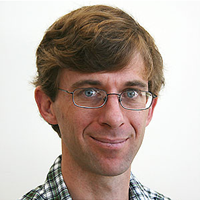
 MERCED - University of California, Merced, professor Michael Cleary has received a $483,803 grant from the California Institute for Regenerative Medicine (CIRM) to develop a tool that could allow previously impossible experiments to be performed in stem cell research.
MERCED - University of California, Merced, professor Michael Cleary has received a $483,803 grant from the California Institute for Regenerative Medicine (CIRM) to develop a tool that could allow previously impossible experiments to be performed in stem cell research.
The tool is known as RNA Analysis by Biosynthetic Tagging (RABT). It will allow researchers to identify gene expression of specific cell types within a mixed population of cells. Gene expression determines the different functions of cells, for example, how a neuron differs from a muscle cell. If successful, RABT could benefit numerous areas of stem cell research.
“We are pleased that CIRM recognizes Professor Cleary’s work,” said Dean Maria Pallavicini of the School of Natural Sciences. “Understanding how stem cells make decisions is a critical question in this field. This award could help stem cell scientists develop research methods that will help accelerate the progress of regenerative medicine.”
In his grant proposal, Cleary wrote that in stem cell research, it is necessary to study gene expression in specific cells within their normal setting. The challenge, however, is that a cell’s “normal” setting is typically within a complex tissue that consists of, and is surrounded by, other cell types. That means researchers have to isolate the specific cell they want to study.
Doing so, however, can cause changes in gene expression and create false results.
Studying the patterns of gene expression between a normal cell and one derived from a stem cell can determine how closely the stem cell-derived cell matches the one it is meant to replace. That, in turn, can help scientists create methods to “instruct” stem cells to make specific types of new cells.
Enhancing RABT as a research tool can help other stem cell researchers “more effectively define the types of stem cells they are working with, the type of cells they want to make and how effectively they can generate specific cell types,” Cleary said. “The nice thing about this award is that CIRM recognizes a lot of basic research needs to be done before therapies can be attempted on humans. Developing these new tools will help this type of basic research.”
Cleary’s Tools and Technologies award is the most recent grant received by UC Merced from CIRM. UC Merced professors Michelle Khine, Jennifer Manilay and Kara McCloskey have also received CIRM research grants. In May 2008, the university received a Major Facilities Grant from the agency to create a Stem Cell Instrumentation Foundry that will be housed in the Science & Engineering Building. To date, CIRM has offered $8.49 million in grants to UC Merced.
CIRM was established in early 2005 following the passage of Proposition 71, the California Stem Cell Research and Cures Initiative. The statewide ballot measure, which provided $3 billion in funding for stem cell research at California universities and research institutions, was approved by California voters in 2004, and called for the establishment of a new state agency to make grants and provide loans for stem cell research, research facilities and other vital research opportunities.
CIRM’s core mission is to support and advance stem cell research and regenerative medicine under the highest ethical and medical standards for the discovery and development of cures, therapies, diagnostics and research technologies to relieve human suffering from chronic disease and injury.
Cleary, a professor in the School of Natural Sciences, is a member of UC Merced’s Stem Cell Research Consortium. His research interests include how complex tissues develop from small populations of stem cells. He earned his doctoral degree from Stanford University and his undergraduate degree from the University of California, Davis.
CONTACT:
Donna Birch Trahan
UC Merced Office of Communications
dbirchtrahan@ucmerced.edu
#########
UC Merced opened September 5, 2005, as the 10th campus in the University of California system and the first American research university of the 21st century. The campus significantly expands access to the UC system for students throughout the state, with a special mission to increase college-going rates among students in the San Joaquin Valley. It also serves as a major base of advanced research and as a stimulus to economic growth and diversification throughout the region. Situated near Yosemite National Park, the university is expected to grow rapidly, topping out at approximately 25,000 students within 30 years.






